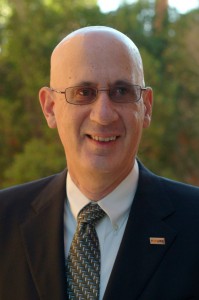Date/Time
Date(s) - 19 Sep 2013
12:00 PM - 1:00 PM
Location
The Biodesign Institute at ASU
Speaker: Kenneth Mossman is a Professor in the School of Life Sciences at ASU and is recognized internationally as an expert on the health effects of ionizing radiation exposure. He is a former president of the Health Physics Society (the largest radiological safety organization in the world with over 6000 members) and member of the Council of Scientific Society Presidents. He has served on advisory committees to several national and international organizations including the National Institutes of Health, the U.S. Nuclear Regulatory Commission and the International Atomic Energy Agency (Vienna). He has recently been nominated by President Obama to the Defense Nuclear Facilities Safety Board.
Location: Biodesign Auditorium
Web Cast: View Live Web Cast
Date & Time: September 19th, 2013 12:00 p.m.
Title: Cancer Complexity and the Problem of Causation
Abstract: Cancer is the second leading cause of death in the US exceeded only by cardiovascular diseases. About 1.6 million people will be diagnosed with cancer (excluding non-melanoma skin cancers) and 580,000 people will die of the disease in 2013. A significant number of cancer deaths can be prevented by controlling smoking behaviors, alcohol consumption and exposure to certain viruses. Nevertheless cancer cannot be eradicated like smallpox or polio because cancers can occur spontaneously, i.e., there may be no identifiable causes. Spontaneity of disease is a consequence of disease complexity. In the world of classical determinism everything happens for a reason and events observed now are a consequence of some earlier events or processes. Complexity makes no claim to a deterministic world. The indeterminacy of complex systems forces us to re-think what causality means. Causal factors are not easily identifiable because of the high spontaneous incidence of disease, and cancers cannot be clinically distinguished by their cause or by carcinogen dose. Furthermore, causation is spatially and temporally uncoupled from clinical disease. The implications for public-health policy are considerable because carcinogens are regulated to very low doses at enormous economic costs.
If you have questions please contact Christina Cates :
Christina Cates, Center for the Convergence of Physical Science and Cancer Biology
Arizona State University | P.O. Box 871504 | Tempe, AZ 85287
480.965.0342 | Fax: 480.965.6362

